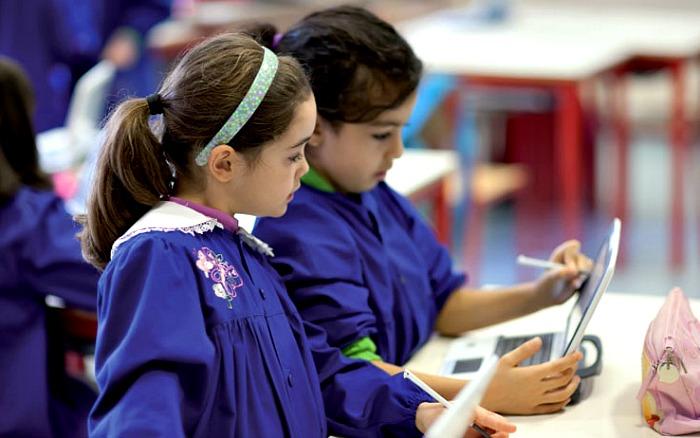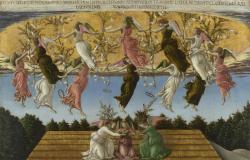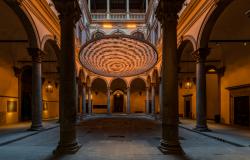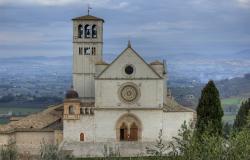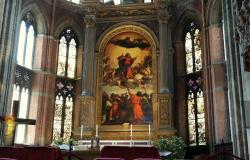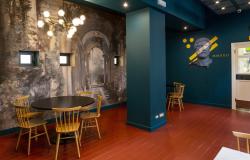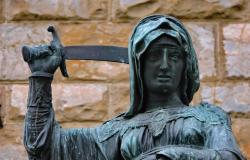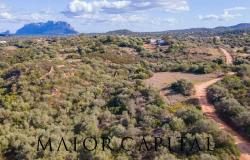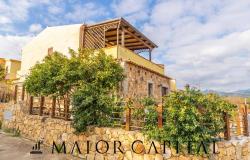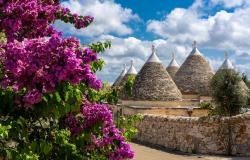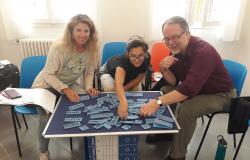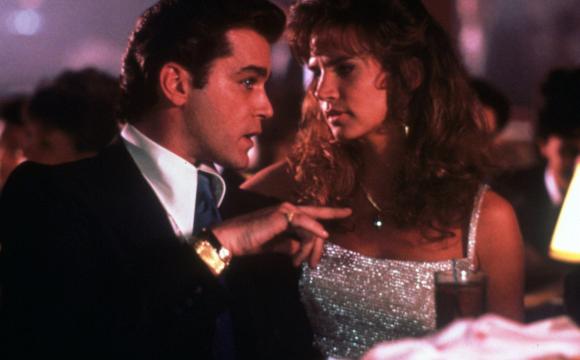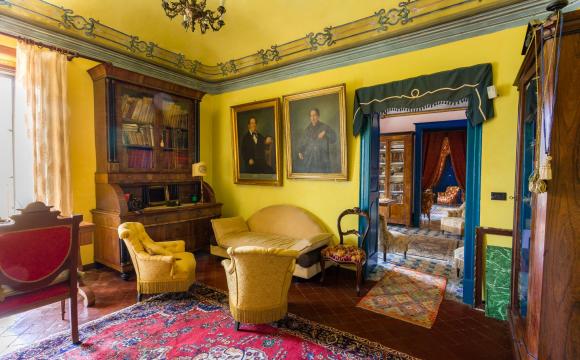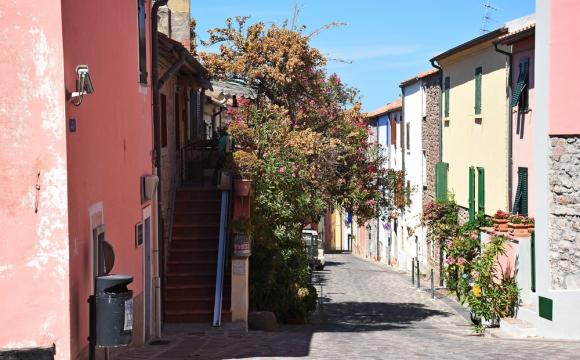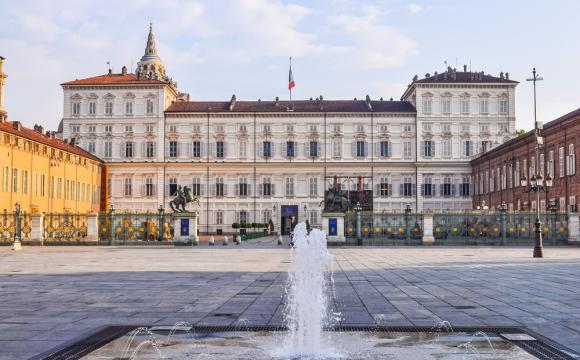September marks the end of the summer holiday season in Italy, most people are back to work, everyone has new end-of-summer resolutions, and kids are finally back to school... or almost back to school!
I recently mentioned to a British friend that my daughter is not back in school yet, she looked very surprised and asked:
'But when did their summer holidays start?' When I explained that school closed in early June, she looked even more puzzled and added, 'What do you mean? They had three full months off?' - 'Yes!'
School terms are not the only difference between the Italian educational system and those of other Western countries.
So we thought it would be useful to know more about it if you are considering or planning to move to Italy with your children. You can find below a list of ten useful things you should know before enrolling your child in an Italian school.

GENERAL INFORMATION
Regardless of nationality, education in Italy is compulsory from 6 to 16 years of age, and is divided into five stages: kindergarten (scuola dell'infanzia), primary school (scuola primaria or scuola elementare), lower secondary school (scuola secondaria di primo grado or scuola media), upper secondary school (scuola secondaria di secondo grado or scuola superiore).
Asilo (Kindergarten)
From the age of three to the age of six, children are sent to nursery school. This is non-compulsory, but most Italian families do send their kids 'all'asilo'. Children are looked after by two teachers per class, they play, start socialising and learn to recognize letters and numbers.
Scuola Primaria (Primary School)
Also known as 'scuola elementare, primary school lasts five years. The educational curriculum is the same for all students who are given a basic education in Italian, English, mathematics, natural sciences, history, geography, social studies, physical education, visual and musical arts.
There are three main teachers per class, plus an English language teacher who works with children across several classes.
Scuola secondaria (Secondary school)
Secondary education in Italy lasts 8 years and is divided into two phases: Scuola secondaria di primo grado (Lower secondary school), also broadly known as Scuola media, which corresponds to the Middle School grades, and Scuola secondaria di secondo grado (Upper secondary school), also broadly known as Scuola superiore or less formally as Le Superiori, which corresponds to the high-school level.
The scuola secondaria di primo grado follows primary school and lasts three years (roughly from age 11 to 14). The scuola secondaria di secondo grado lasts five years (roughly from age 14 to 19). There are three types of scuola secondaria di secondo grado:
Liceo (lyceum) - the education received in a Liceo is mostly theoretical, with a specialization in a field of studies, for example humanities, science, or art; less attention is devoted to technical-practical education. Currently, most of the curricula have a similar structure and some subjects in common (such as Italian literature, history and mathematics), while some subjects are peculiar to a particular type of course (for example ancient Greek in the Liceo Classico, or scenography in the Liceo Artistico).
Istituto tecnico - offering both a theoretical education and a specialization in a particular field of studies (for example economy, humanities, administration, law, technology, tourism.)
Istituto professionale - this refers to vocational schools preparing people for specific trades, crafts and careers. Some schools offer a diploma after 3 years instead of 5.

Any type of secondary school that lasts 5 years grants access to the final exam, called esame di maturità or esame di stato which takes place every year between June and July and is necessary to be able to apply for admission to any university.
According to the Programme for International Student Assessment, coordinated in 2013 by the OECD, Italian secondary education ranks as the 21st in the world.
TIME FOR SCHOOL: SCHOOL TERM, SCHOOL HOURS AND DAILY SCHEDULE
Lessons usually start around the second week of September and finish around the second week of June.
There are small regional differences, with the school term starting earlier in the Northern regions, and later in the South, but it is usually just a matter of days. As more autonomy has been recently given to individual schools, it might also be the case that a school decides to make some minor changes to the yearly calendar.
There are school breaks only for Christmas and Easter, with most holidays being concentrated in the summer, and schools are closed on national holidays.
The school year is divided into two terms, 'quadrimestri'. The autumn term starts in September and runs until the middle of January. Spring term begins in the middle of January and runs until the beginning of June. At the end of each term, students receive a 'pagella', a report card with their grades which may vary from 10 (excellent) to 1 (impossible to assess), with passing being 6. Today, report cards are frequently issued in automated form and may be mailed to parents/students or made accessible on a special section of the school website.

The majority of schools in Italy run morning lessons starting at 8.00am/8.30 am which usually last 5 hours, from Monday to Saturday. This means most kids come back home for lunch, therefore, there is no canteen in most Italian schools. Kindergarten and schools with special afternoon projects and activities are an exception though, as they are usually open till 4.00/4.30pm and can provide lunch for the kids.
The daily schedule is usually divided into five periods with some double-blocked classes lasting two periods.Over the past few years, more and more schools are introducing the so called 'settimana corta' (literally short week), which means that students attend classes from Monday to Friday for more than five hours a day and have Saturday free.
ISCRIZIONE - REGISTRATION
The Iscrizione (registration) for all schools occurs January through February of the previous school year, however, each school may be different so you should contact the school to know more about their specific enrollment period.
Enrollment in an Italian state school doesn’t depend on your living within its catchment area, as is the case, for example, in France and the UK. You can enroll your child in the school of your choice regardless of the area you live in. If a place is available, your child will be admitted; if places are limited, those who live in the local area will have priority.
PARENTS-SCHOOL RELATIONSHIP
The parents’ relationship with the school and the teachers follows both official and unofficial routes.
Every year, in each class, parents elect a representative who acts as the main intermediary between parents and the school, handling various tasks including favouring the dialogue between teachers and parents, reporting specific complaints, coordinating parents to help the school with special events and initiatives like school trips and fundraising.

Parents are also represented in the Consiglio d'Istituto (Similar to a School Board), which has the duty to promote good relationships between the school, the students’ parents and the community and takes important decisions regarding the school, including the budget.
They comprise the 'dirigente scolastico/preside'(the headmaster), parents, teachers, members of the administrative staff and, in the case of 'scuola superiore', also students. Members hold office for three years.
Teachers have the so-called 'ora di ricevimento' (office hour), one hour a week set on their calendar where they are available to meet parents and listen to their concerns.
There are usually two official days every year, towards the end of each 'quadrimestre', when teachers meet parents to talk about how their kids are doing. These are usually very busy afternoon meetings where each teacher stands in a different corner of the classroom and parents queue to talk to each of them.
Keep in mind that most teachers are quite approachable on a daily basis and understand if working parents have problems to take time off for official school meetings.
DOPOSCUOLA
Many schools offer free after school activities, but these varies from school to school, so it is better to ask before registering.
Primary schools usually offer afternoon lessons to help children with their homework, secondary schools might offer music lessons, art or photography lessons and many other extracurricular activities.
UNIFORM, WHAT'S A UNIFORM?
Italian schools do not require uniforms.
Children in kindergarten and primary schools wear a 'grembiule', a school smock. Boys at the 'asilo' usually wear a blue and white checked grembiule, while girls wear a pink/red and white checked one. In Primary schools, the colour of the smock is deep blue. They are available in clothing shops and big supermarkets, and can be personalised with special decors. Students in secondary school can wear whatever they want, even though it always turns into a non compulsory 'jeans and a T-shirt' voluntary uniform.

THE SCHOOL KIT
With the exception of young children attending kindergarten who just need a small bag with a bottle of water and some tissues, a school kit for everyone else includes a school bag, Textbooks, Notebooks and Stationery.
Lo zaino scolastico - The school bag
Believe me when I say that Italian school bags are among the biggest I have ever seen and they always seem too small. With students going back home for the afternoon, there is a big emphasis on homework with books carried back and forth every day. If you care about your children's back, get a trolley, 'zaino scolastico con le ruote'.
Textbooks
Usually, you book your kids' textbooks in a bookshop which should have a list of approved texts from his/her teachers. It is advisable to book them in early summer, so that you will have them ready to be collected in September. In primary school, they used to be completely refundable, but the system keeps changing, so ask the bookshop manager what to expect.
Stationery and Notebooks
In primary school, buy the essential and wait for the teacher to explain what the kids need. First and second year notebooks are ruled in a special way, so are the ones for the third year, so you might end up buying the wrong ones. Moreover, many teachers prefer children on the first year of primary school to use erasable pens.
The long list of textbooks for secondary schools can end up costing you a small fortune; look for second-hand books by contacting older students, there are also dedicated websites indicating who is selling second-hand books in your area.
Diario
The best part of the school kit for children and teenagers alike is the 'diario', the school planner, which is supposed to be used to write down the homework, but has represented a form of 'prehistorical social network' for many generations. They use it to exchange messages with friends, add pictures, write poems and jokes. They come in various sizes and colours with themes, from Disney Princesses to One Direction, from Winnie the Pooh to F1 Grand Prix.

CORSIVO - CURSIVE
Italy is one of the few Western countries where you are still taught to write 'in corsivo', in cursive also known as longhand, script, joined-up writing.
While many countries around the world have already dropped cursive from their curricula, the issue is still currently debated among educators in Italy; in the meantime, teachers in the classrooms continue to teach children how to write using both Corsivo and Stampato (Print).
RELIGION CLASSES
It is customary for all schools to include a class on Catholic religion one hour per week. When you register, you are asked to fill a form that identifies whether you wish for your child to attend these lessons or not. As an alternative to religion class, you can choose other educational activities or ask to allow your child to enter or leave the school premises later or earlier.
RICREAZIONE - MID-MORNING BREAK
There is no other word that makes students happier than 'ricreazione'. This is the small 10/15 minutes break they usually have between 10.30 and 11.30, when they are allowed to eat something, chat and play. For children in kindergarten and primary school, parents usually prepare a small box with something to eat and drink. In high school, it is quite common for students to buy food and drinks in the school from local vendors.
If you think we have missed something important, leave us a comment and we will be happy to update the info. If you have a specific question or want to share your experience, join our COMMUNITY.
